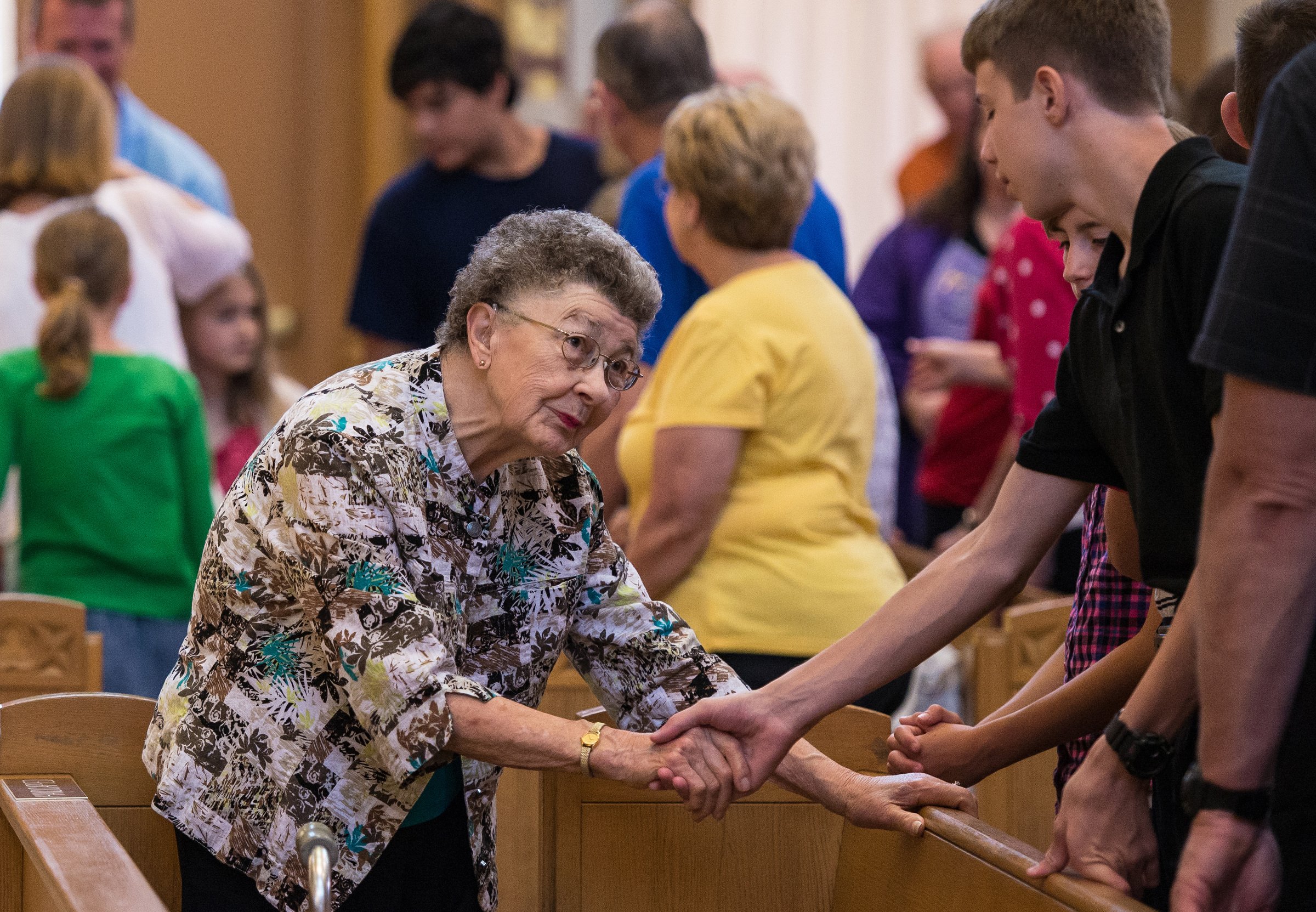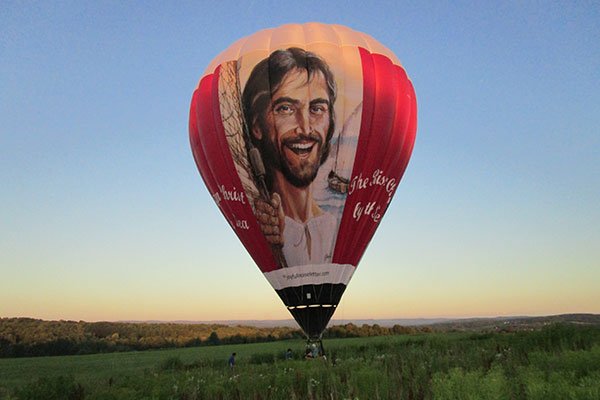When a minister calls out wedding photographers
“A photographer’s first task is to meet with the minister, ideally at the wedding rehearsal, and discuss limitations or concerns for taking photos.”
A while back, I came across a video on YouTube and decided to write about it here because it relates to photography in a religious setting.
In the video, a minister is leading an outdoor wedding ceremony. As he speaks, one can hear the sound of a camera shutter firing away. The minister abruptly turns his attention to the wedding photographer and videographer standing behind him. He tells them, “Please, sirs, leave. … This is a solemn assembly. Not a photography session. Please move.”
The expressions on the bride and groom’s faces are of sheer horror, probably thinking about that huge check they wrote to have their special day recorded and photographed.
As the camera is removed from its tripod and the video loses its focus, the minister is heard ending his sermon to the photographers: “This is not about photography. This is about God.”
What a terrible ending to what should have been a magnificent, memorable day.
Who is to blame for this incident and how could it have been avoided? First, both the photographers and the minister share the blame.
As a Catholic press photographer, I have covered religious ceremonies and witnessed other photographers who seemed to operate with complete disregard for the sacred environment in which they were working. They see no difference between shooting a prayer service or a sporting event. Whether it is the attire worn inside a church (T-shirts, blue jeans and tennis shoes or sandals) or the way he or she distracts the congregation by moving around at inappropriate times, unprofessional photographers can give their colleagues a bad reputation.
At the same time, some church officials (whether it’s a priest, sacristan or master of ceremony) need to understand the importance of capturing the moment for posterity. While covering the ordination of several priests at Milwaukee’s St. John the Evangelist Cathedral many years ago, I received an unpleasant look from the master of ceremonies. Apparently another photographer got on his bad side and he restricted my movement at the liturgy.
I’ve photographed weddings at churches and know that each priest or minister has his or her own opinions about wedding photographers. A photographer’s first task is to meet with the minister, ideally at the wedding rehearsal, and discuss limitations or concerns for taking photos. Priests are usually fine with photographers moving around the church to get the right shot, but some don’t allow flash photography. The use of a motor-driven camera, which sounds like a muffled machine gun, can also be a distraction and should be avoided in churches.
Today, mirrorless cameras, like the Nikon Z6 and Z7II that I use, are able to operate on silent mode. This allows the photographer to be seen, but not heard.
Catholic weddings, especially ceremonies that take place within the celebration of Mass, are indeed sacred, sacramental events. But this should not prohibit capturing the event on camera.
The outcome captured in this video should never have happened. The photographers and the minister could have prevented it if some preplanning had taken place. The obvious losers were the bride and groom.
What are your thoughts? Have you witnessed a similar situation at a wedding?
A photographer’s take on the sign of peace
I think I speak for most Catholic photojournalists when I say, “We need gestures at Mass!”
Back in 2014, a letter from the Vatican’s Congregation for Divine Worship and the Sacraments, written to Latin-rite bishops around the world, focused on the sign of peace. After years of study and consultation, the congregation decided that the sign of peace would continue to be part of the liturgy. Local bishops, however, would have the authority to omit it if “it is foreseen that it will not take place properly.”
The letter also said that bishops should do what they can to end “abuses” of the greeting and study whether it’s time to find “more appropriate gestures” to replace it.
A worshipper shares the sign of peace with a young man during Mass in Green Bay, Wis. (Sam Lucero photo)Discussion on the practice of greeting fellow Mass-goers, shaking hands with them and saying, “Peace be with you” came more than two years after the revised Roman Missal was introduced. The revised missal also ushered in changes during the celebration of the Mass, including the laity no longer praying with hands extended (known as the orans position) during the Our Father. Instead, that gesture is reserved to the priest or leader of prayer. Folks in the pews are asked to pray with folded hands or hands at their side.
A lot of thought and discussion have been given to these decisions, both at the local level and on the universal church level. If the Vatican (or a diocesan bishop) decides to put an end to the sign of peace, people in the pews — reluctantly or not — will have to acquiesce. (We did see this happen during the COVID-19 pandemic, although for health and not liturgical reasons.)
While input from church liturgists, historians and theologians is considered when implementing rules on the use of gestures at Mass, the views of Catholic photojournalists are nowhere to be found.
Until now.
I think I speak for most Catholic photojournalists when I say, “We need gestures at Mass!”
I remember the days, during priestly ordinations, when the newly ordained would exit the sanctuary at the sign of peace and give a loving handshake, hug or kiss to his mother and father. Now that was a Kodak moment. This practice is no longer allowed, although I’m not sure when it ended — or how licit it was in the eyes of liturgists.
Holding hands or extending hands during the Our Father was also an opportunity for powerful images during Mass. Hands to the side? Not so much.
Worshippers hold hands while reciting the Our Father during Mass. (Sam Lucero photo)If we wanted stoic expressions to photograph, most Catholic photojournalists would head to the nearest traditional Latin Mass.
All kidding aside, church leaders know the importance of signs and symbols in religion and the liturgy. As a photographer — and thus a very visually oriented observer — I’d like to beg them to not eliminate the outward signs we use to express our love for Christ and his church.
Would you like to ride with the risen Christ?
This 80-foot-tall hot air balloon has the familiar image of a smiling Jesus.
Did you know that a hot air balloon created by Sky Sail Balloons Inc., commemorates the risen Christ? In cooperation with The Joyful Noiseletter, an 80-foot-tall hot air balloon has the familiar image of a smiling Jesus, titled “The Risen Christ by the Sea.”
On its website, www.skysail.org/risen, Sky Sail Balloons explained that rights to the portrait of Christ, painted by Jack Jewell, are owned by The Joyful Noiseletter. Sky Sail secured the rights to the image to use the art on a hot air balloon.
Sky Sail owner and chief pilot Geoff Turner is now offering the hot air balloon to Christian groups for their festivals. From the website:
“The balloon ride business offers the opportunity to share a totally unique perspective of God's creation. The extension of using a balloon to introduce to, and remind people of, the Good News was a step that made a lot of sense, not to mention the obvious comical irony of having a resurrection themed balloon named ‘RISEN!’ … Hire us to come help you celebrate the Good News."
According to Sky Sail, with the challenges facing Christians around the world, having the Risen Balloon, as it is called, flying in the sky is one way to express the joyful message of Easter that Christ has indeed risen.
windows depict life of St. Therese
These 16 stained-glass windows depict the life of the saint known as the “Little Flower.”
Several years ago, I had an opportunity to visit the Basilica of Holy Hill, National Shrine of Mary, Help of Christians, in Hubertus. I was asked by the Carmelite Friars to photograph all of the stained glass windows on the property. This not only included the upper Basilica, but the lower chapel, known as the St. Therese Chapel, the monastery and another prayer room.
The project required the use of hydraulic lifts to get close to eye level with the windows in the upper and lower churches. It was quite a rush ascending above the pews in the basilica — a view few people have experienced.
One of the recent additions at Holy Hill are new stained glass windows inside the St. Therese Chapel, which is dedicated to St. Therese of Lisieux. The 16 windows, created by Conrad Schmitt Studios of Milwaukee, depict the life of the saint known as the “Little Flower.” I have included a slideshow of the windows here for viewing.





